
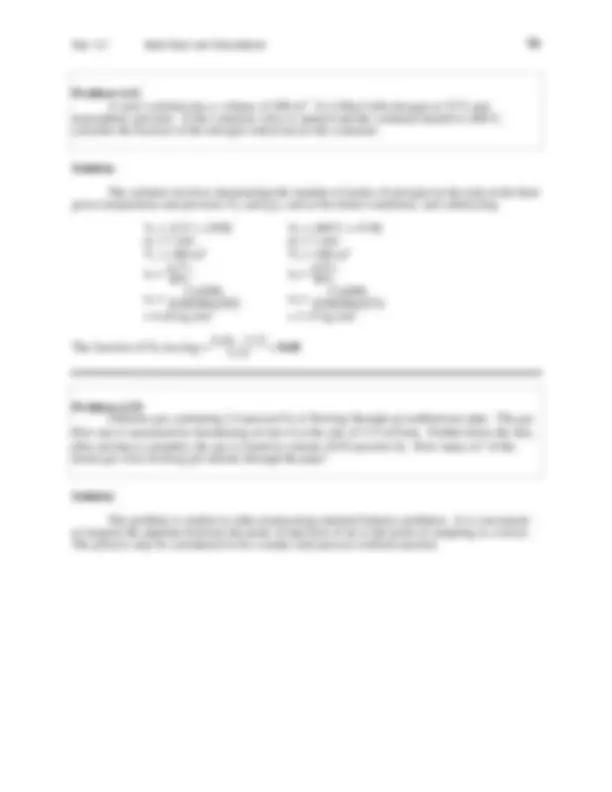
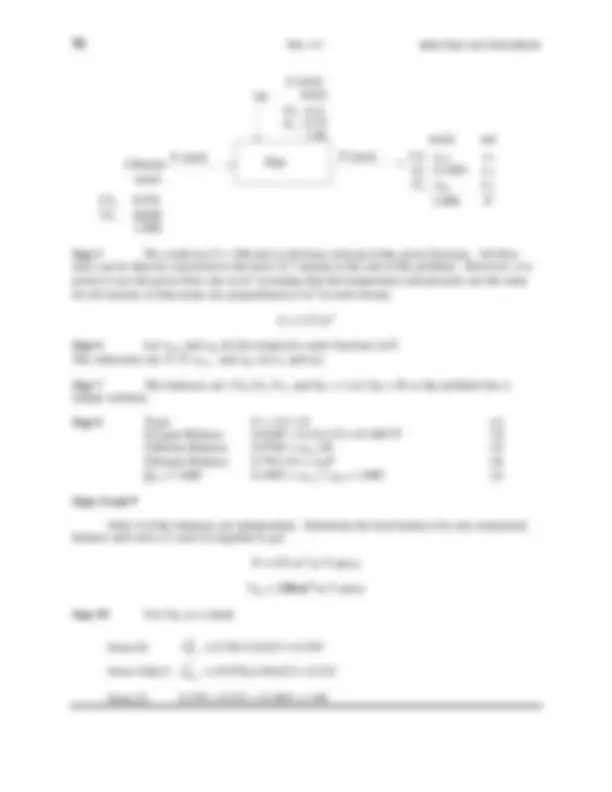
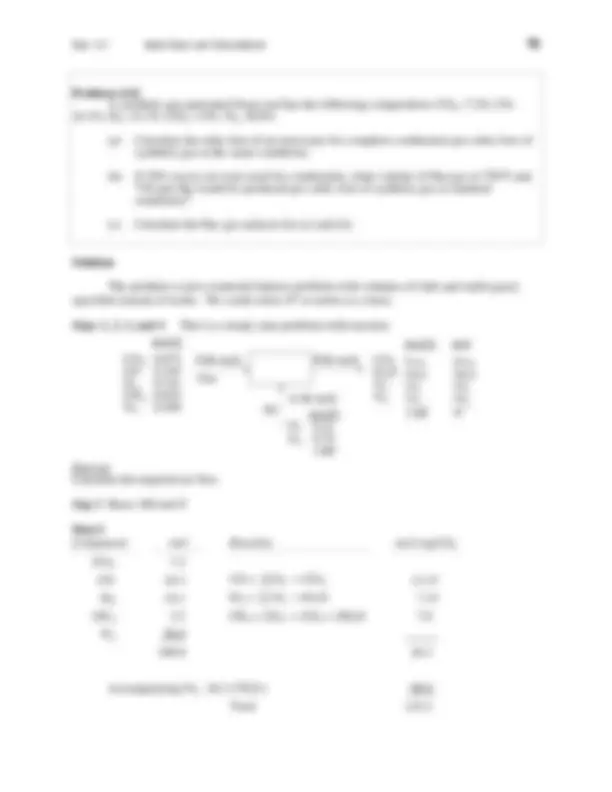
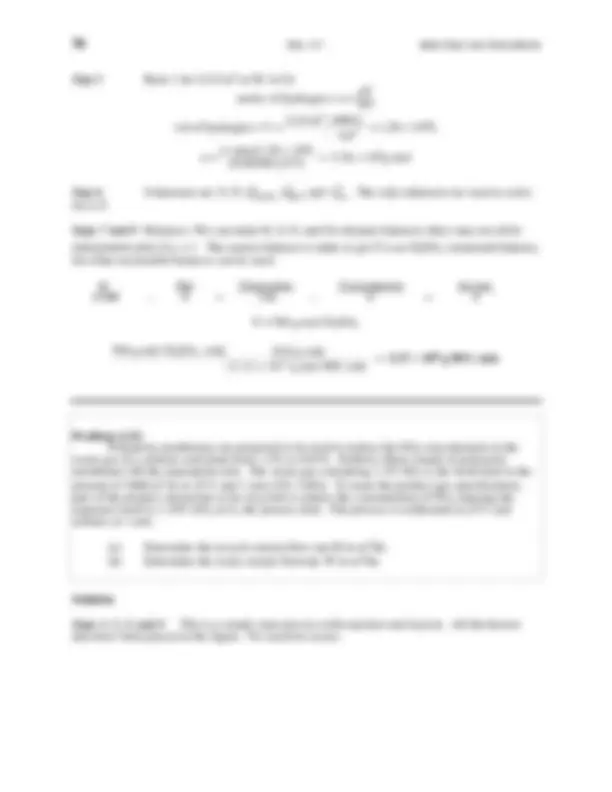
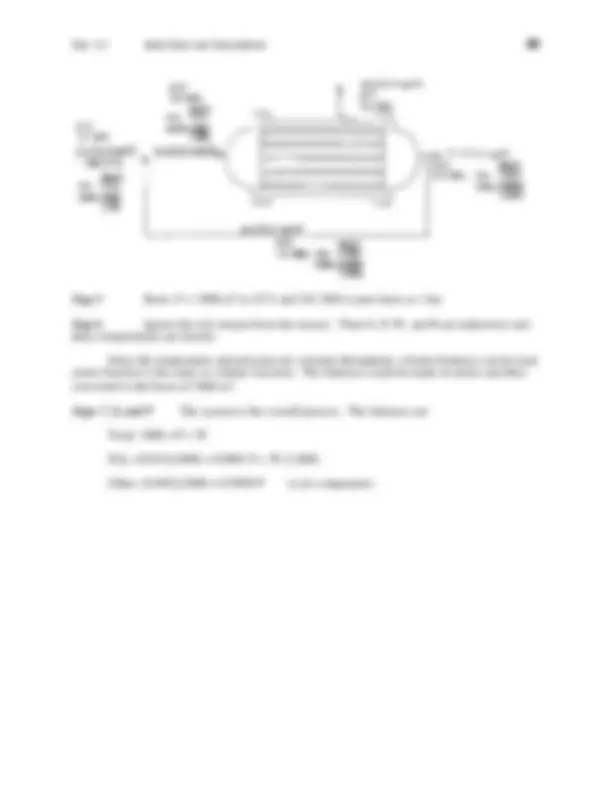
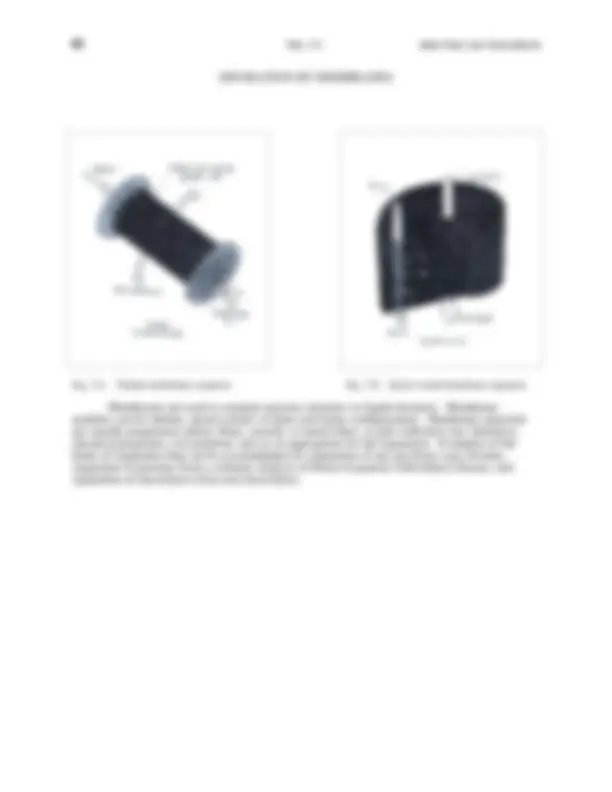
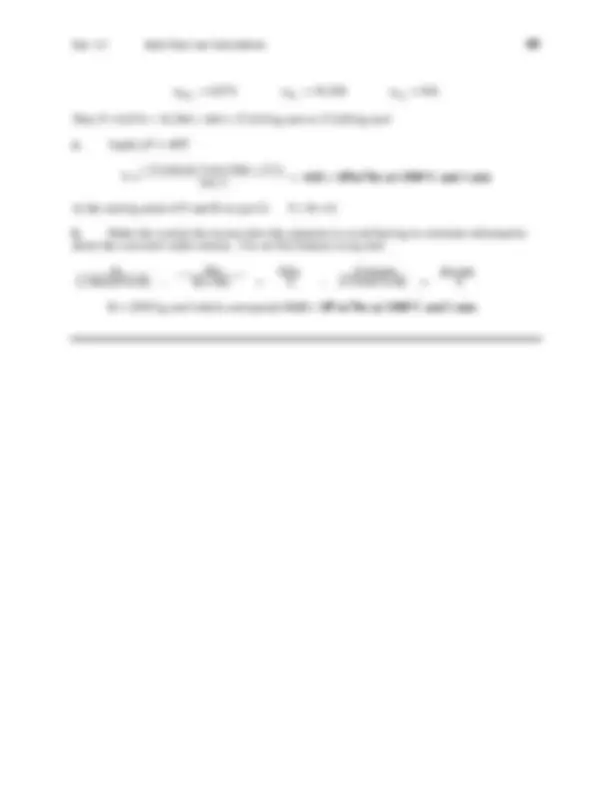
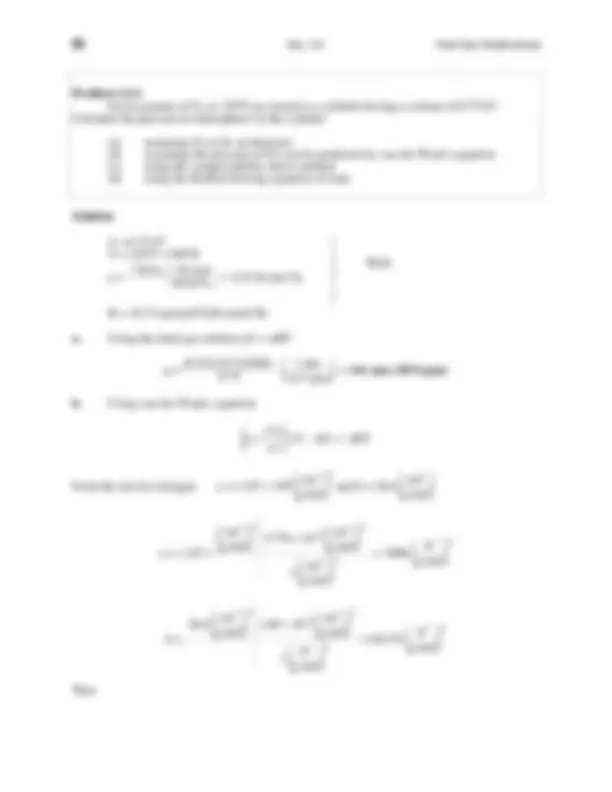
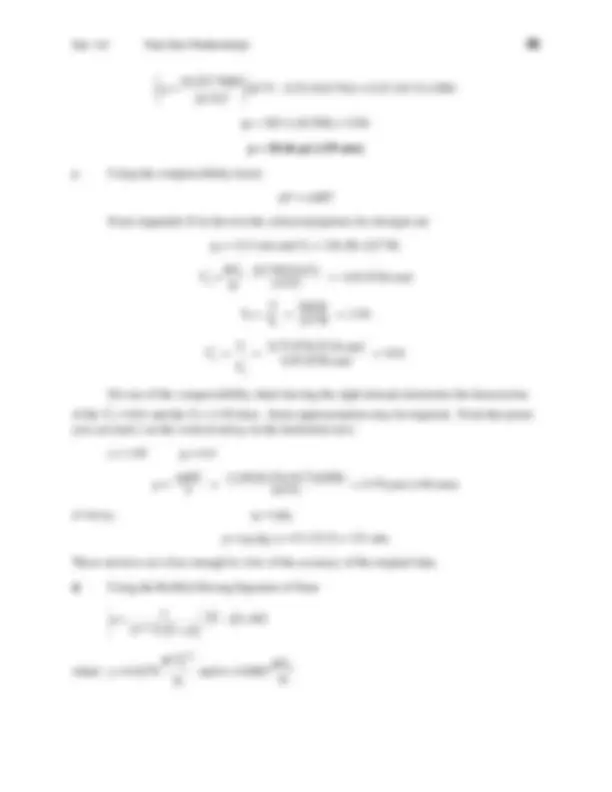
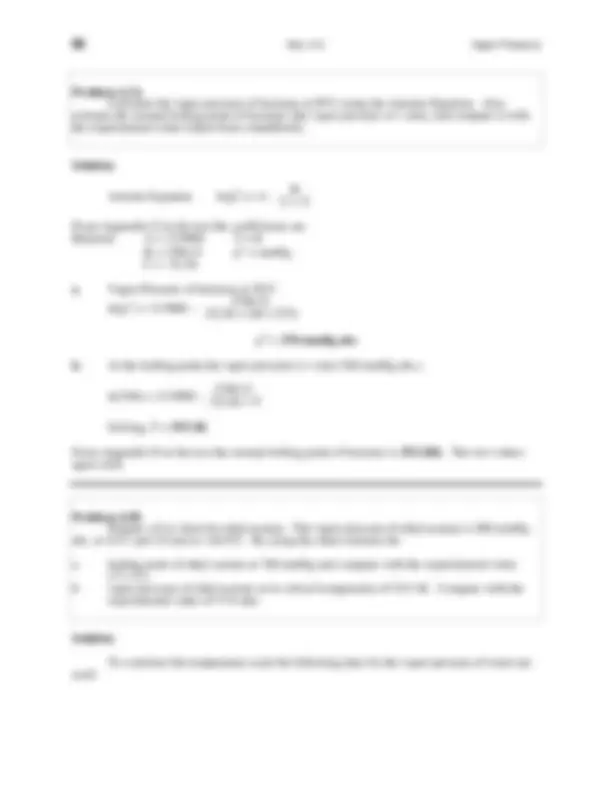
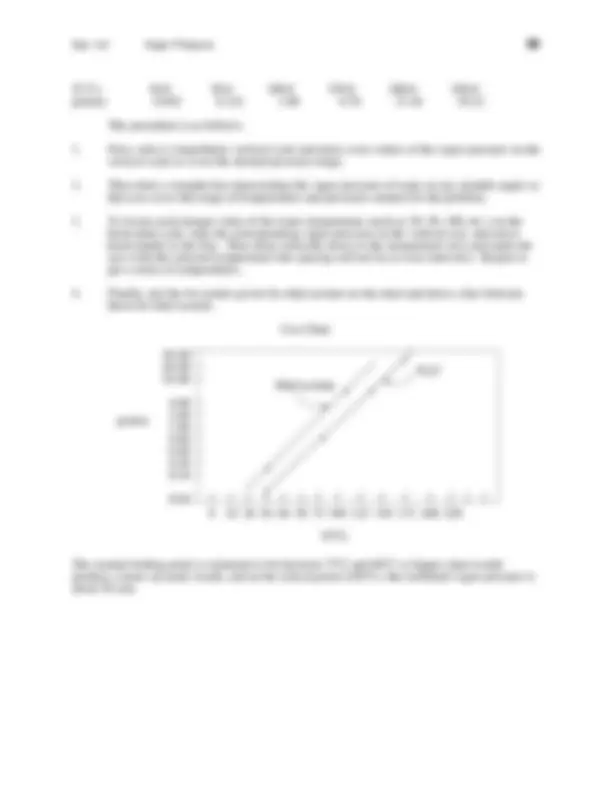
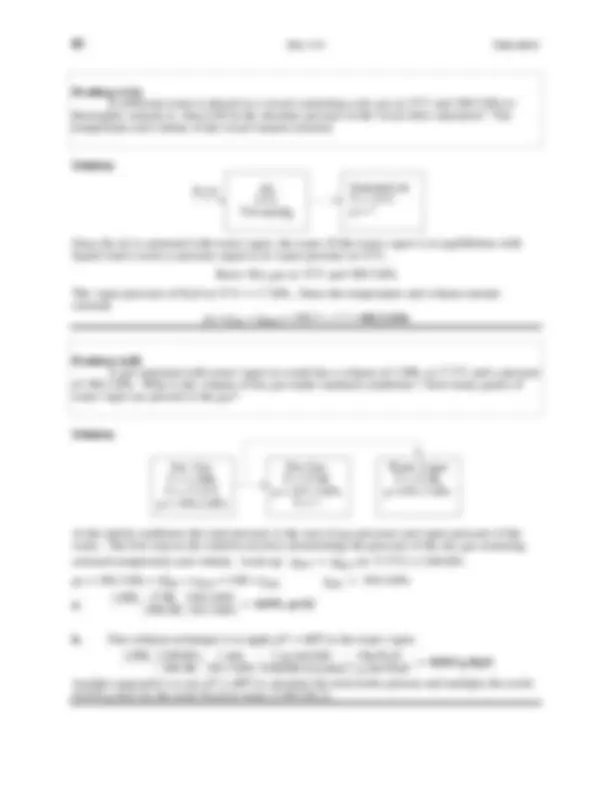
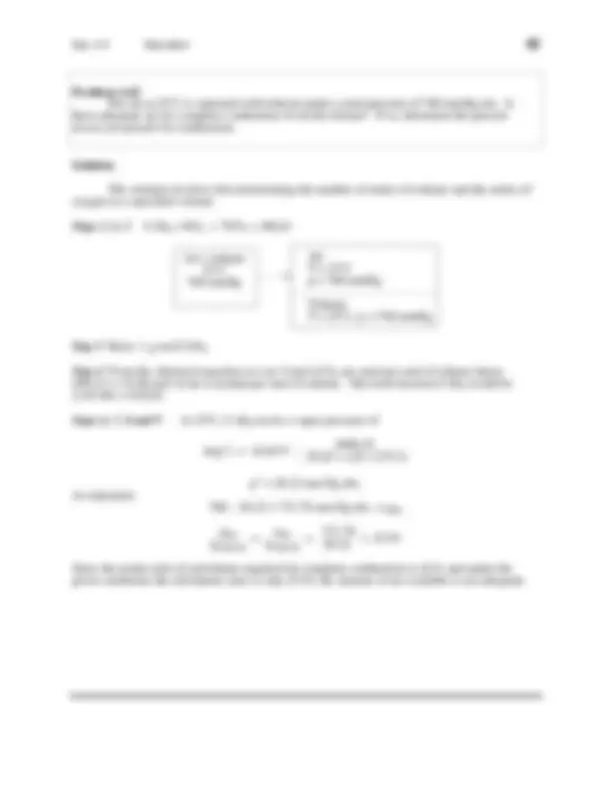
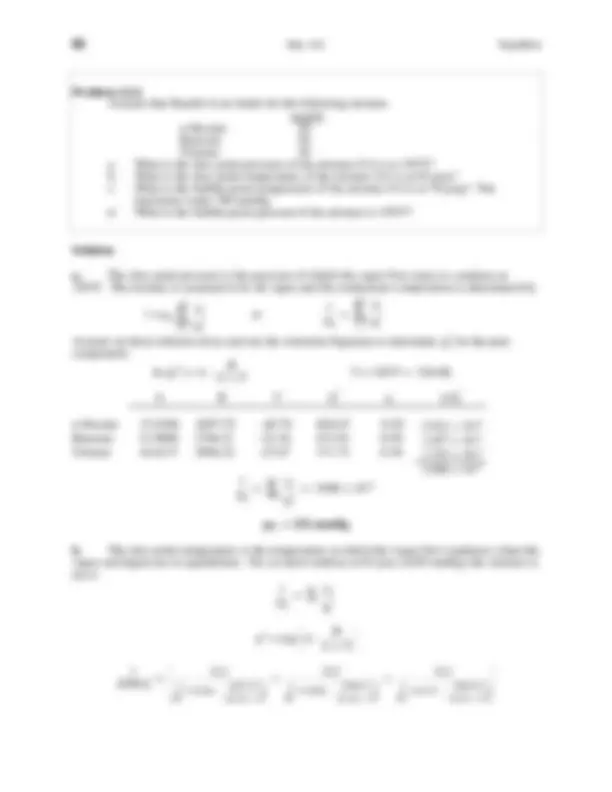
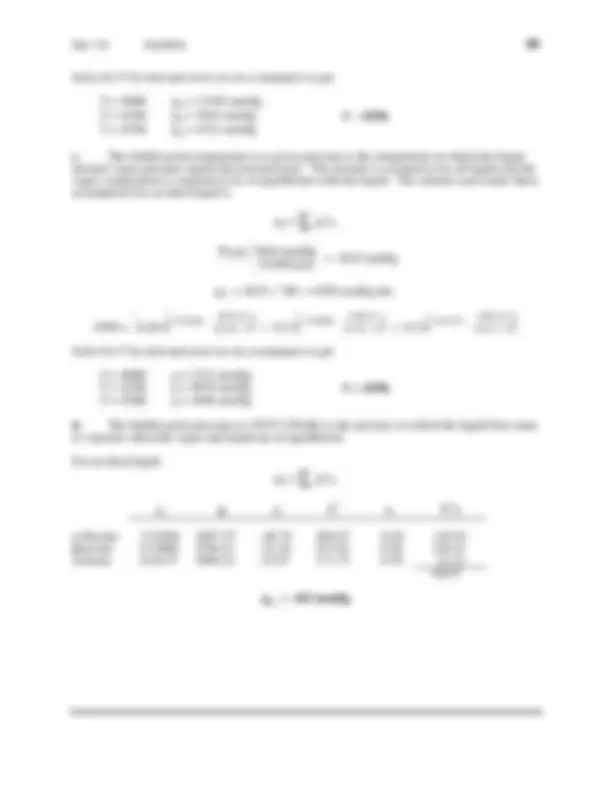
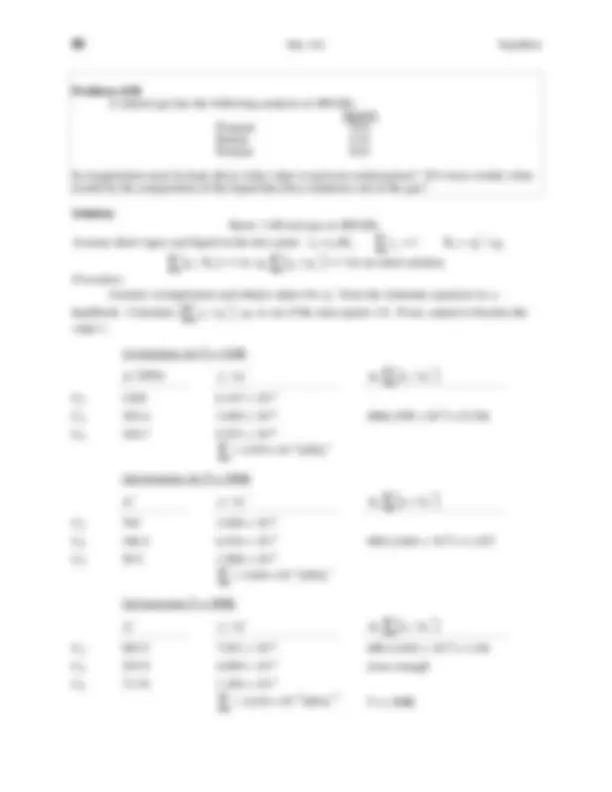
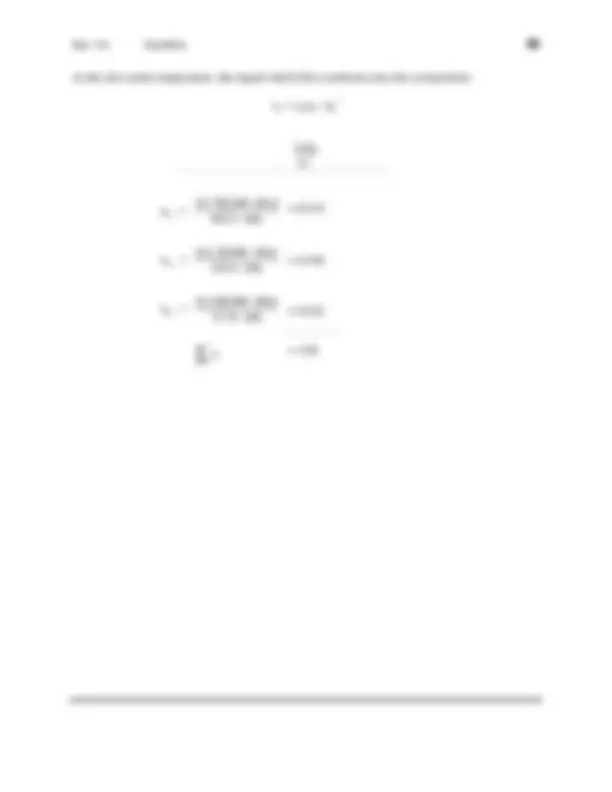
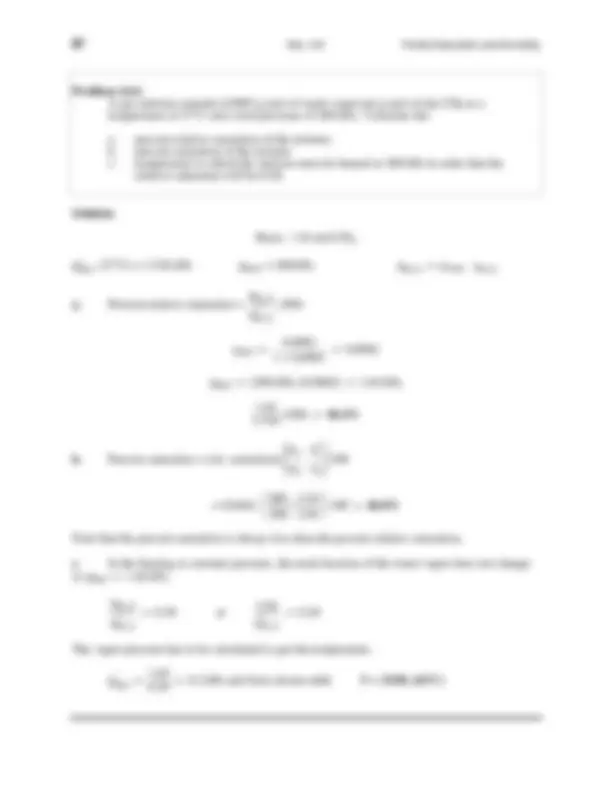
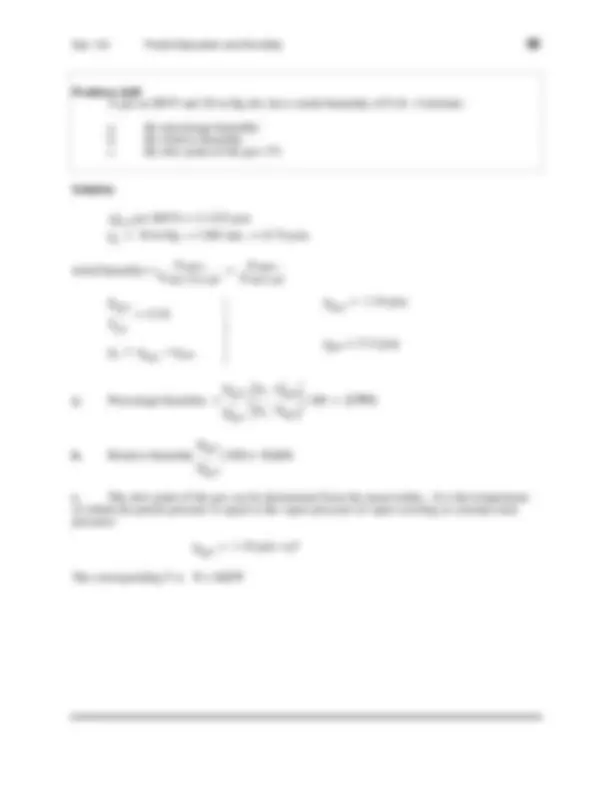
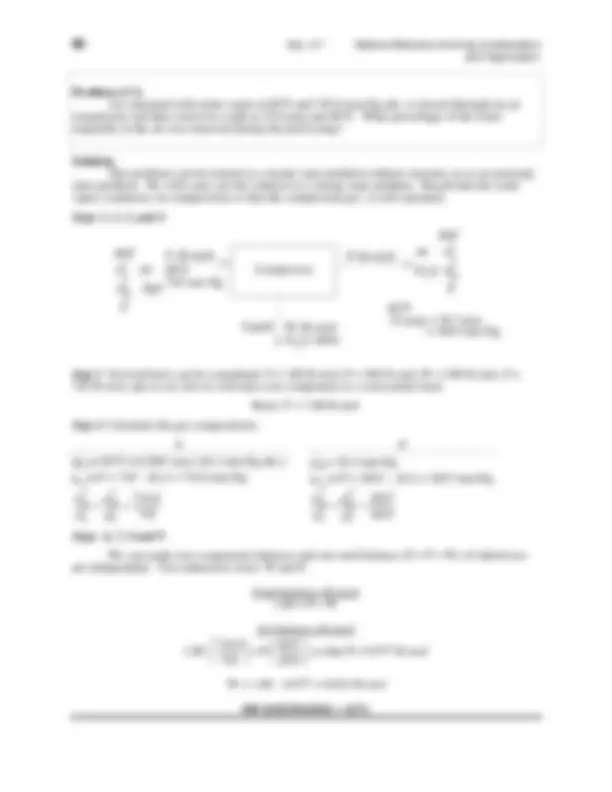
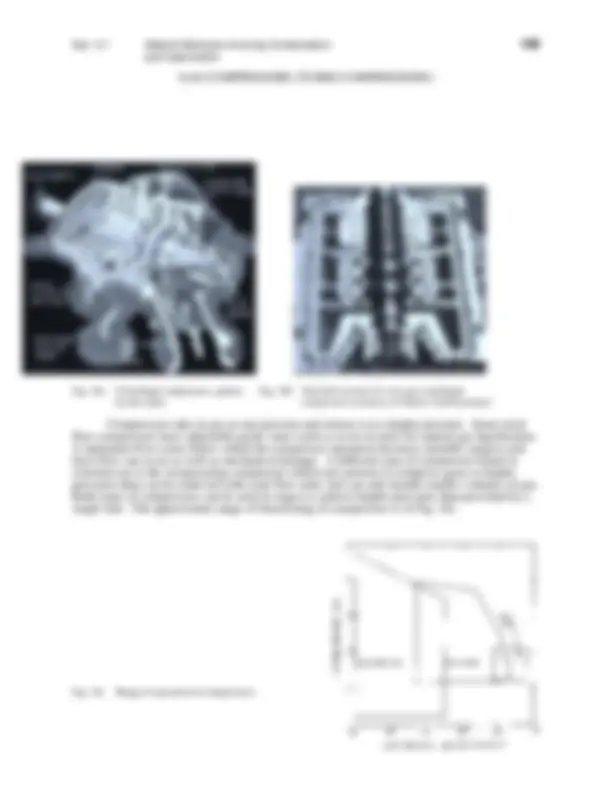
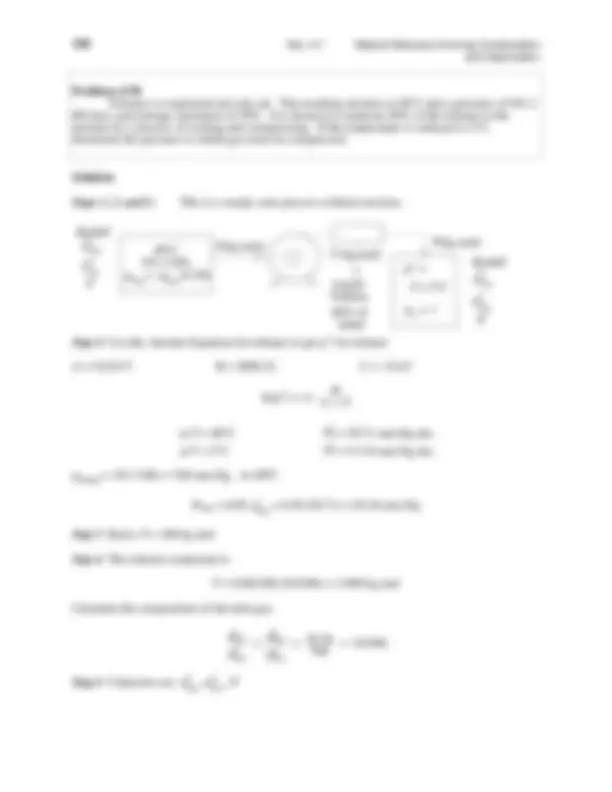
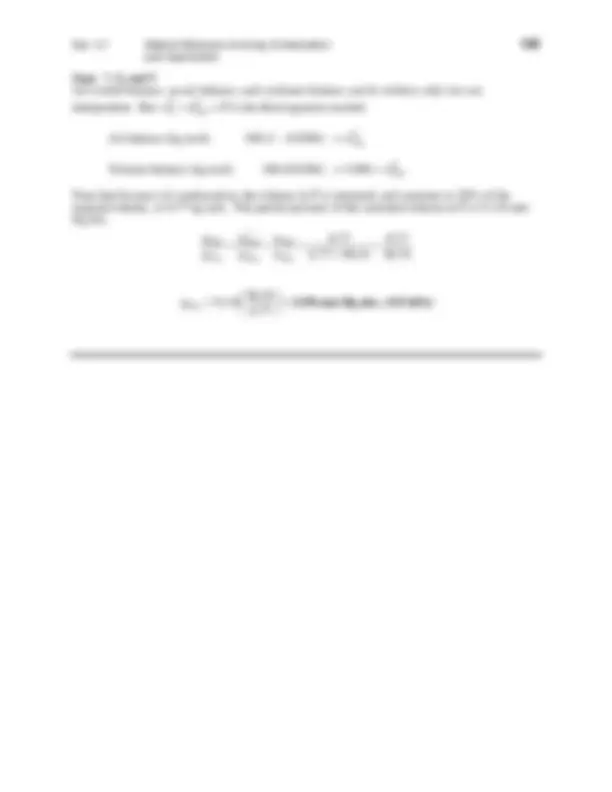
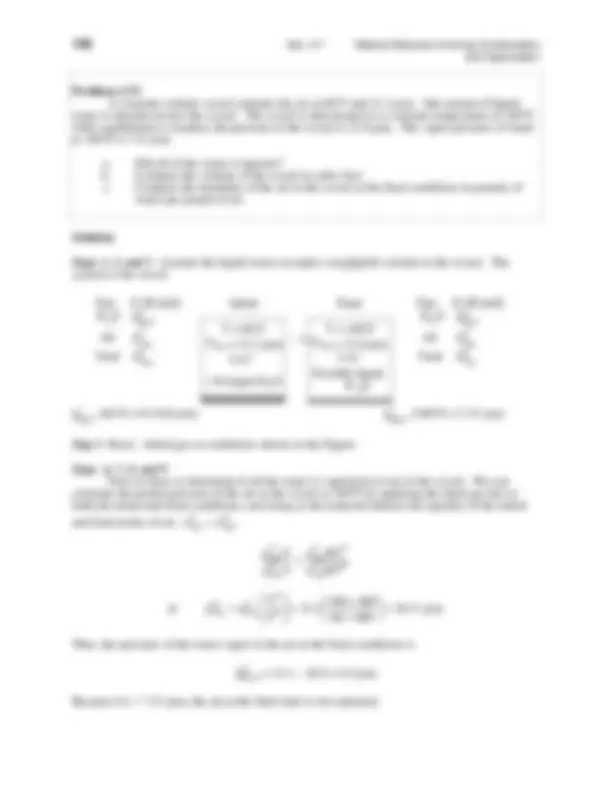
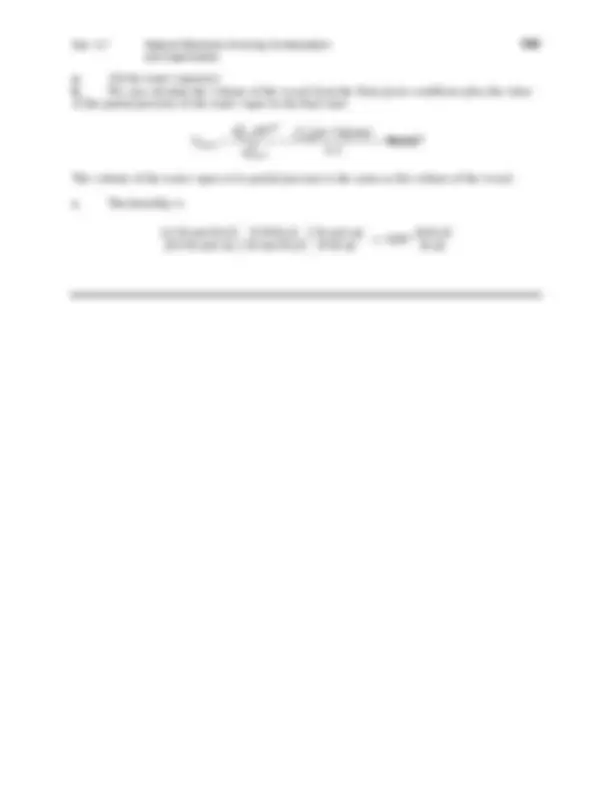
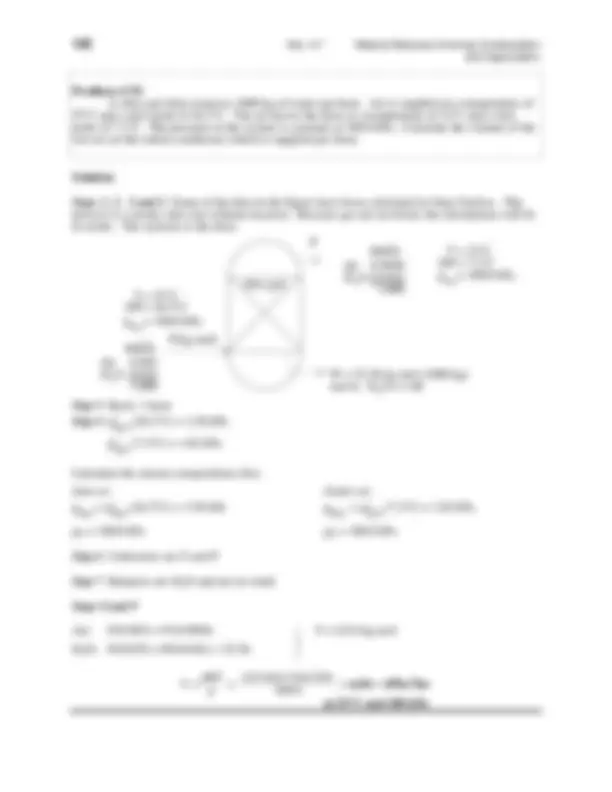
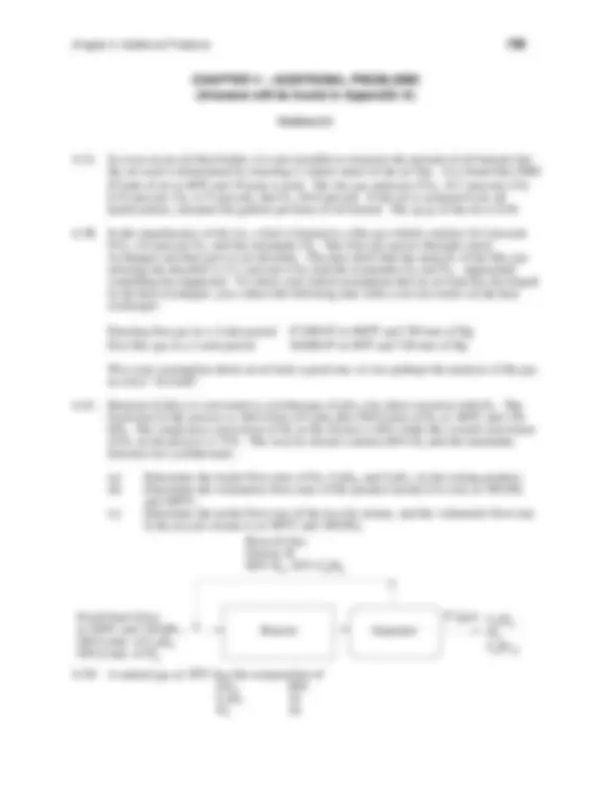
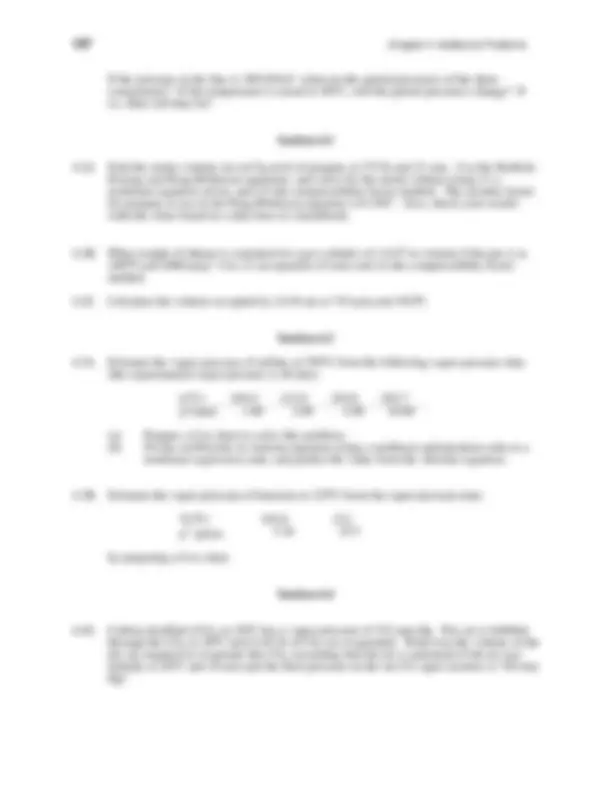
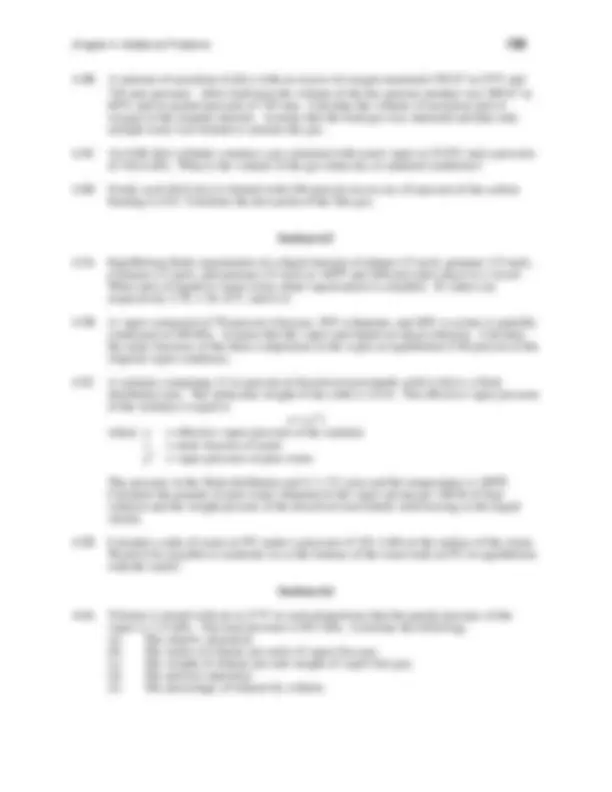
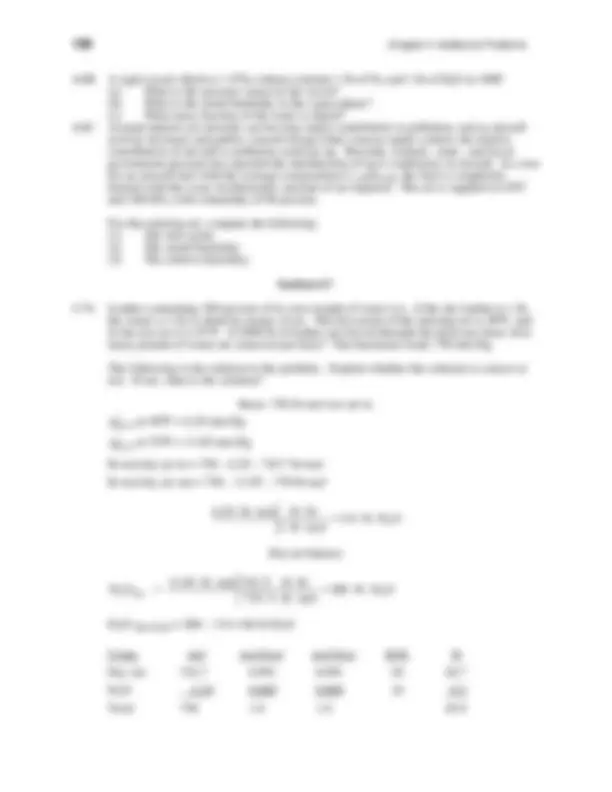
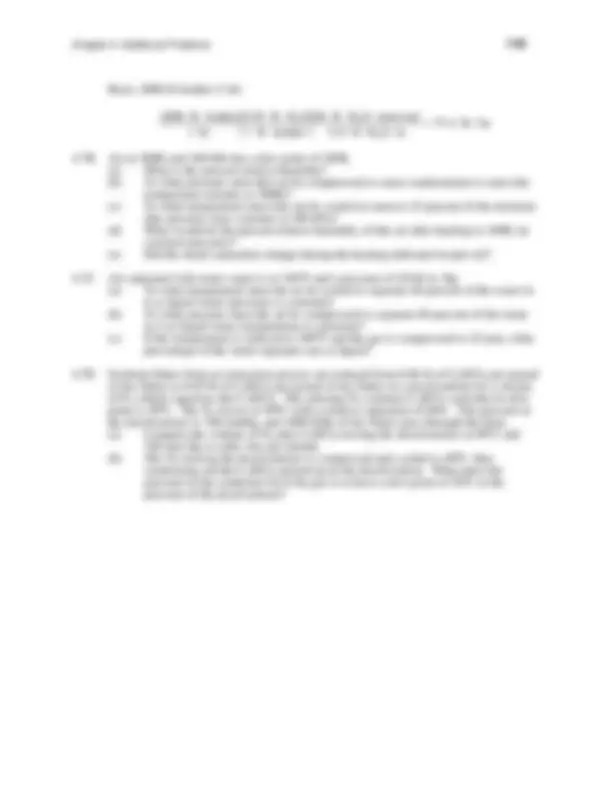


Study with the several resources on Docsity

Earn points by helping other students or get them with a premium plan


Prepare for your exams
Study with the several resources on Docsity

Earn points to download
Earn points by helping other students or get them with a premium plan
Community
Ask the community for help and clear up your study doubts
Discover the best universities in your country according to Docsity users
Free resources
Download our free guides on studying techniques, anxiety management strategies, and thesis advice from Docsity tutors
Detailed calculations and solutions using the ideal gas law for various gases, including nitrogen, oxygen, chlorine, and water vapor. It covers topics such as mole fractions, molar flow rates, and the conversion between units. The document also includes problems related to the combustion of synthetic gas and the flash distillation unit.
Typology: Summaries
1 / 39

This page cannot be seen from the preview
Don't miss anything!
































Problem 4.1A A steel tank having a capacity of 25 m^3 holds carbon dioxide at 30˚C and 1.6 atm. Calculate the weight, in grams, of the carbon dioxide.
Solution
T = 30˚C = 30 + 273.15 = 303K
p = 1.6 atm
V = 25 m^3
Use pV = nRT
The gas constant has to be chosen to be consistent with the units of pressure, temperature, and volume. Use standard conditions to calculate R
1.00 atm 22.415m^3 kg mol 273.15K
(atm)(m^3 ) (kg mol)(k)
n =
(p)(V) (R)(T)
= 1.608 kg mol or 1,608 g mol
Weight of carbon dioxide =
1,608 g mol 44 g CO 2 g mol CO 2 = 70.7 × 103 g CO 2
Alternate Solution:
Use V = 22.415 m^3 /kg mol at T = 273K and p = 1 atm abs.
and
p 2 p 1
n 2 n 1
25 m^3 1.6 atm abs 1 atm abs
1 kg mol 22.415 m^3
44 kg CO 2 1 kg mol CO 2
1000 g 1 kg = 70.7 × 103 g CO 2
73 Sec. 4.1 Ideal Gas Law Calculations
Problem 4.1B 20 ft^3 of nitrogen at 300 psig and 100˚F and 30 ft^3 of oxygen at 200 psig and340˚F are
injected into a 15 ft^3 vessel. The vessel is then cooled to 70˚F. Find the partial pressure of each
component in the 15 ft^3 vessel. Assume that the ideal gas law applies.
Solution
20 ft^3 300 psig, 100˚F
200 psig, 340˚F
30 ft^3
p =?
15 ft^3
The problem can be solved by determining the number of moles of oxygen and nitrogen and solving for the total pressure at the final conditions. Then the partial pressures are calculated using the mole fractions.
Nitrogen Oxygen V = 20 ft^3 V = 30 ft^3 p = 300 psig = 314.7 psia p = 200 psig = 214.7 psia T = 100˚F = 560˚R T = 340˚F = 800˚R
nN 2 =
pV RT
= 1.05 lb mol nO 2 =
= 0.75 lb mol
nT = nN 2 + nO 2 = 1.80 lb mol
Final pressure pT =
nTRT V
= 682 psia
moles mole fr(yi) pi = pT(yi) O 2 0.75 0.42 (^) 286 N 2 1.05 0.58 (^) 396 1.80 1.00 (^682) psia
75 Sec. 4.1 Ideal Gas Law Calculations
xN 2
P (mol)
Cl 2
mol fr.
mol fr.
Cl 2
Air
A (mol)
Chlorine Pipe
F (mol) xCl 2
mol fr.
mol
n 1 n 2 n 3 P
Step 5 We could use F = 100 mol as the basis instead of the given flowrate. All flow rates can be then be converted to the basis of 1 minute at the end of the problem. However, it is
easier to use the given flow rate in m^3 assuming that the temperature and pressure are the same
for all streams so that moles are proportional to m^3 in each stream.
A = 115 m^3
Step 6 Let xCl 2 and xN 2 be the respective mole fractions in P.
The unknowns are: F, P, xCl 2 , and xN 2 (or n 1 and n 3 ).
Step 7 The balances are: Cl 2 , O 2 , N 2 , and Σxi = 1 (or Σni = P) so the problem has a unique solution.
Step 8 Total F + 115 = P (1) Oxygen Balance 0.024F + 0.21(115) = 0.1085 P (2) Chlorine Balance 0.976F = xCl 2 (P) (3) Nitrogen Balance 0.79(115) = xN 2 P (4) ∑xi = 1.000 0.1085 + xCl 2 + xN 2 = 1.000 (5)
Steps 8 and 9
Only 4 of the balances are independent. Substitute the total balance for one component balance and solve (1) and (2) together to get
P = 253 m^3 at T and p
Vin = 138 m^3 at T and p
Step 10 Use Σxi as a check
from (4) xN 2 P = 0.79(115)/253 = 0.
from (3)&(1) xCl 2 P = (0.976)(138)/253 = 0.
from (5) 0.359 + 0.532 + 0.1085 = 1.
Sec. 4.1 Ideal Gas Law Calculations 76
Problem 4.1E A synthetic gas generated from coal has the following composition: CO 2 , 7.2%; CO, 24.3%; H 2 , 14.1%; CH 4 , 3.5%; N 2 , 50.9%.
(a) Calculate the cubic feet of air necessary for complete combustion per cubic foot of synthetic gas at the same conditions.
(b) If 38% excess air were used for combustion, what volume of flue gas at 750˚F and 738 mm Hg would be produced per cubic foot of synthetic gas at standard conditions?
(c) Calculate the flue gas analysis for (a) and (b).
Solution
The problem is just a material balance problem with volumes of inlet and outlet gases
specified instead of moles. We could select ft^3 or moles as a basis.
Steps 1, 2, 3, and 4 This is a steady state problem with reaction.
F(lb mol) P(lb mol)
mol fr. mol nCO 2 nH 2 O nN 2 nO 2 1.00 P
A (lb mol)
Gas
Air
xCO 2 xH 2 O xN 2 xO 2 mol fr.
mol fr.
Part (a) Calculate the required air first.
Step 5 Basis 100 mol F
Step 4 Component mol Reaction mol reqd O 2
CO 2 7. CO 24.3 CO +^12 O 2 →^ CO 2 12. H 2 14.1 H 2 +^12 O 2 →^ H 2 O^ 7. CH 4 3.5 CH 4 + 2O 2 → CO 2 + 2H 2 O 7. N 2 50. 100.0 26.
Accompanying N 2 : 26.3 (79/21) 98. Total 125.
Sec. 4.1 Ideal Gas Law Calculations 78
ft^3 flue gas ft^3 air at SC at T and p
Part (c) Flue gas analysis.
a. The water and carbon dioxide are the same as in part b, and there is no O 2 in the flue gas. mol mol fr CO 2 35 0. H 2 O 21.1 (^) 0. N 2 98.9 (^) 0. 155 1.
b. (^) mol mol fr CO 2 35 0. H 2 O 21.1 (^) 0. N 2 187 0. O 2 10.1 (^) 0. 253 1.
Problem 4.1F An old way of producing hydrogen gas in the laboratory was by the reaction of sulfuric acid with zinc metal H 2 SO 4 (l) + Zn(s) → ZnSO 4 (s) + H 2 (g) How many grams of sulfuric acid solution (98%) must act on an excess of zinc to produce 12.
m^3 /hr of hydrogen at standard conditions. Assume all the acid used completely reacts.
Solution
Steps 1, 2, 3, and 4 You first must determine the number of moles of hydrogen produced, and then calculate the acid required via stoichiometry. This is a steady state process with reaction except for the Zn (which can be assumed to exit the vessel).
P H 2 O
x
O 4
x (^) n
F(g mol) P(g mol) Zn
G(g mol)
Z(g) (^) H 2
mol fr.
12.0 m3 SC 540 g mol
Zn S
Zn
mol fr.
H 2 O
H 2 SO 4
H 2 O
mass fr.
MW
98
18
mol fr.
10
(^3) g mol Zn
x P^ SO Zn 4
Z
79 Sec. 4.1 Ideal Gas Law Calculations
Step 5 Basis 1 hr (12.0 m^3 at SC in G)
moles of hydrogen = n =
pV RT
vol of hydrogen = V =
12.0 m^3 1000 L 1m^3
n =
(1 atm)(1.20 × 104 ) (0.08206) (273) = 5.36 × 102 g mol
Step 6 Unknowns are: F, P, xZnSO^ P^4 , xHP^2 O, and xZnP^. The only unknown we want to solve for is F.
Steps 7 and 8 Balances: We can make H, S, O, and Zn element balances (they may not all be
independent) plus Σxi = 1. The easiest balance to make to get F is an H 2 SO 4 compound balance, but other reasonable balances can be used.
In Out Generation Consumption Accum. 0.90F – 0 + 536 – 0 = 0
F = 596 g mol H 2 SO 4
596 g mol H 2 SO 4 soln (^) 10.0 g soln 11.11 × 10 -3^ g mol 98% soln
= 5.37 × 104 g 98% soln
Problem 4.1G Polymeric membranes are proposed to be used to reduce the SO 2 concentration in the waste gas of a sulfuric acid plant from 1.5% to 0.01%. Hollows fibers (made of polymeric membrane) fill the separations unit. The waste gas containing 1.5% SO 2 is the fresh feed in the
amount of 1000 m^3 hr at 25˚C and 1 atm (101.3 kPa). To meet the product gas specifications, part of the product stream has to be recycled to reduce the concentration of SO 2 entering the separator itself to 1.10% SO 2 in G, the process feed. The process is isothermal at 25˚C and isobaric at 1 atm.
(a) Determine the recycle stream flow rate R in m^3 /hr. (b) Determine the waste stream flowrate W in m^3 /hr.
Solution
Steps 1, 2, 3, and 4 This is a steady state process with reaction and recycle. All the known data have been placed in the figure. No reaction occurs.
81 Sec. 4.1 Ideal Gas Law Calculations
Fig. 17a Tubular membrane separator Fig. 17b Spiral wound membrane separator
Membranes are used to separate gaseous mixtures or liquid mixtures. Membrane modules can be tubular, spiral-wound, or plate and frame configurations. Membrane materials are usually proprietary plastic films, ceramic or metal tubes, or gels with hole size, thickness, chemical properties, ion potential, and so on appropriate for the separation. Examples of the kinds of separation that can be accomplished are separation of one gas from a gas mixture, separation of proteins from a solution, dialysis of blood of patients with kidney disease, and separation of electrolytes from non electrolytes.
Sec. 4.1 Ideal Gas Law Calculations 82
Two of the balances are independent. Solve any two to get
P = 985.1 m^3 /hr at 25˚C and 1 atm W = 14.9 m^3 /hr at 25˚C and 1 atm
To get R we make a balance on the mixing point where F and R combine to make G
Total: 1000 + R = G
SO 2 : 0.015(1.000) + 0.0001R = 0.011G
Other: (0.985)(1000) + 0.9999R = 0.989G
(Two of the balances are independent). Solve the first two to get
R = 364 m^3 /hr at 25˚C and 1 atm G = 1364 m^3 /hr at 25˚C and 1 atm
Step 10 Check
0.15(1000) ?= 0.001 (985.1) + 14. 15 = 15 OK.
Problem 4.1H In a sulfuric acid plant, sulfur is burned in the presence of excess oxygen to produce sulfur dioxide which in turn is further reacted in the next step with oxygen in a converter to produce sulfur trioxide. In the plant SO 2 along with 10% excess air is fed into the converter which operates at 1500˚C and 1 atm. The per pass conversion of SO 2 is 75% and overall conversion is 100%. If
106 m^3 /hr of SO 3 at 1100˚C and 1 atm is fed to the converter, calculate the:
(a) flow rate of the product stream P in m^3 /hr at 1500˚C and 1 atm and its composition in mole percent; (b) flow rate of the recycle stream R in m^3 /hr at 1500˚C and 1 atm.
Solution
This is a steady state problem with reaction and recycle.
Steps 1, 2, and 3
2
Sec. 4.1 Ideal Gas Law Calculations 84
nSO 3 = 8,874 nN 2 = 18,360 nO 2 = 444
Thus P = 8,874 + 18,360 + 444 = 27,618 kg mol or 27,620 kg mol
a. Apply pV = nRT
= 4.02 × 106 m^3 /hr at 1500 ° C and 1 atm
At the mixing point of F and R we get G: F + R = G
b. Make the system the reactor plus the separator to avoid having to calculate information about the converter outlet stream. Use an SO 2 balance in kg mol.
In Out Gen. Consum. Accum. (1.00)(8874+R) – R(1.00) + 0 – 0.75(8874+R) = 0
R = 2958 kg mol which corresponds 0.43 × 106 m^3 /hr at 1500˚C and 1 atm
85 Sec. 4.2 Real Gas Relationships
Problem 4.2A Seven pounds of N 2 at 120˚F are stored in a cylinder having a volume of 0.75 ft^3. Calculate the pressure in atmospheres in the cylinder
(a) assuming N 2 to be an ideal gas (b) assuming the pressure of N 2 can be predicted by van der Waal's equation (c) using the compressibility factor method (d) using the Redlich-Kwong equation of state.
Solution
V = 0.75 ft^3 T = 120˚F = 580˚R
n =
7 lb N 2 1 lb mol 28 lb N 2 = 0.25 lb mol N 2
Basis
R = 10.73 (psia)(ft^3 )/(lb mol)(˚R)
a. Using the ideal gas relation pV = nRT
p =
1 atm 14.7 psia
= 141 atm (2074 psia)
b. Using van der Waals, equation
p +
n^2 a V^2
V – nb = nRT
From the text for nitrogen a = 1.347 × 106
cm^3 g mol
2 and b = 38.
cm^3 g mol
a = 1.347 ×
cm^3 g mol
2 3.776 x 10-^
cm^3 g mol
2
cm^3 g mol
2
ft^3 g mol
2
b =
cm^3 g mol
2 1.60 × 10 -^
cm^3 g mol
2
ft^3 g mol
2
ft^3 g mol
2
Then
87 Sec. 4.2 Real Gas Relationships
a = 0.
= 5286 (°R)0.5^ (atm) (ft^3 /lb mol)^2
b = 0.
= 0.429 ft^3 /lb mol
Substitute these values into the equation
p +
(p + 20.96) (2.571) = 4235
p = 144 atm
The pressures determined by three methods are comparable although not exactly same.
Problem 4.2B A gas analyzes 60% methane and 40% ethylene by volume. It is desired to store 12.3 kg
of this gas mixture in a cylinder having a capacity of 5·14 × 10 -2^ m^3 at a maximum temperature of 45˚C. Calculate the pressure inside the cylinder by
(a) assuming that the mixture obeys the ideal gas laws; (b) using the compressibility factor determined by the pseudo critical point method.
Solution Basis: 12.3 kg
a. Ideal Gas Law pV = nRT
av mol wt = ∑yiMWi = 0.60 (16) + 0.40 (28) = 20.
kg kg mol
n =
12.3 kg 1 kg mol mixture 20.8 kg mixture = 0.591 kg mol
T = 45˚C = 318K V = 5.14 × 10 -2^ m^3 R = 8.314 (kPa) (m^3 )/(kg mol)(K)
p =
nRT V
= 30,400 kPa
Sec. 4.2 Real Gas Relationships 88
b. Pseudocritical method
pc ′
i
yi Tc ′
i
yi Vc ′ = Vci ′
i
yi
Methane Ethylene Tc = 190.7K Tc = 283.1 K pc = 45.8 atm (4640 kPa) pc = 50.5 atm (5116 kPa)
Vc ′ =
RTc pc
m^3 kg mol Vc ′ =
RTc pc
m^3 kg mol
Tc ′ = 0.60 (190.7) + 0.40 (283.1) = 227.7K pc ′ = 0.60 (4640) + 0.40 (5116) = 4830 kPa
Vc ′ = 0.60 (0.342) + 0.40 (0.460) = 0.
m^3 kg mol
Tr ′ =
Tc^ ′^
Vr^ ′^ = V Vc
′
5.14 × 10 -2^ m^3 /0.591 kg mol 0.389 m^3 /kg mol
Using Tr ′ and Vr ′ , we get pr = 5.3 (approximately) so that p = prpc ′ = (5.3)(4830) = 26,000 kPa
Sec. 4.2 Vapor Pressure 90
p(atm): 0.042 0.122 1.00 4.70 15.36 39.
The procedure is as follows:
Cox Chart
p(atm)
Ethyl acetate
The normal boiling point is estimated to be between 75˚C and 80˚C (a bigger chart would produce a more accurate result), and at the critical point (250˚C), the estimated vapor pressure is about 50 atm.
91 Sec. 4.4 Saturation
Problem 4.4A If sufficient water is placed in a vessel containing a dry gas at 15˚C and 100.5 kPa to thoroughly saturate it, what will be the absolute pressure in the vessel after saturation? The temperature and volume of the vessel remain constant.
Solution
H O 2 Air 15˚C 754 mmHg
Saturated air T = 15˚C p =?
Once the air is saturated with water vapor, the water (if the water vapor is in equilibrium with liquid water) exerts a pressure equal to its vapor pressure at 15˚C.
Basis: Dry gas at 15˚C and 100.5 kPa
The vapor pressure of H 2 O at 15˚C = 1.7 kPa. Since the temperature and volume remain constant pT = pair + pH 2 O = 100.5 + 1.7 = 102.2 kPa
Problem 4.4B A gas saturated with water vapor in a tank has a volume of 1.00L at 17.5˚C and a pressure of 106.2 kPa. What is the volume of dry gas under standard conditions? How many grams of water vapor are present in the gas?
Solution
Sat. Gas V = 1.00L T = 17.5˚C p = 106.2 kPa
Dry Gas T = 273K p = 101.3 kPa V =?
Water Vapor T = 273K p =101.3 kPa
At the initial conditions the total pressure is the sum of gas pressure and vapor pressure of the water. The first step in the solution involves determining the pressure of the dry gas assuming
constant temperature and volume. Look up: pH 2 O = pH*^2 O(at 17.5˚C) = 2.00 kPa
pT = 106.2 kPa = pH*^2 O+ pgas = 2.00 + pgas pgas = 104.2 kPa
a.
104.2 kPa 101.3 kPa = 0.97L at SC
b. One solution technique is to apply pV = nRT to the water vapor.
1.00L 2.00 kPa 290.5K
1 atm 101.3 kPa
1 (g mol)(K) 0.08206 (L)(atm)
18g H 2 O 1 g mol H 2 O = 0.015 g H 2 O
Another approach is to use pV = nRT to calculate the total moles present and multiply the result (0.039 g mol) by the mole fraction water (2.00/106.2).